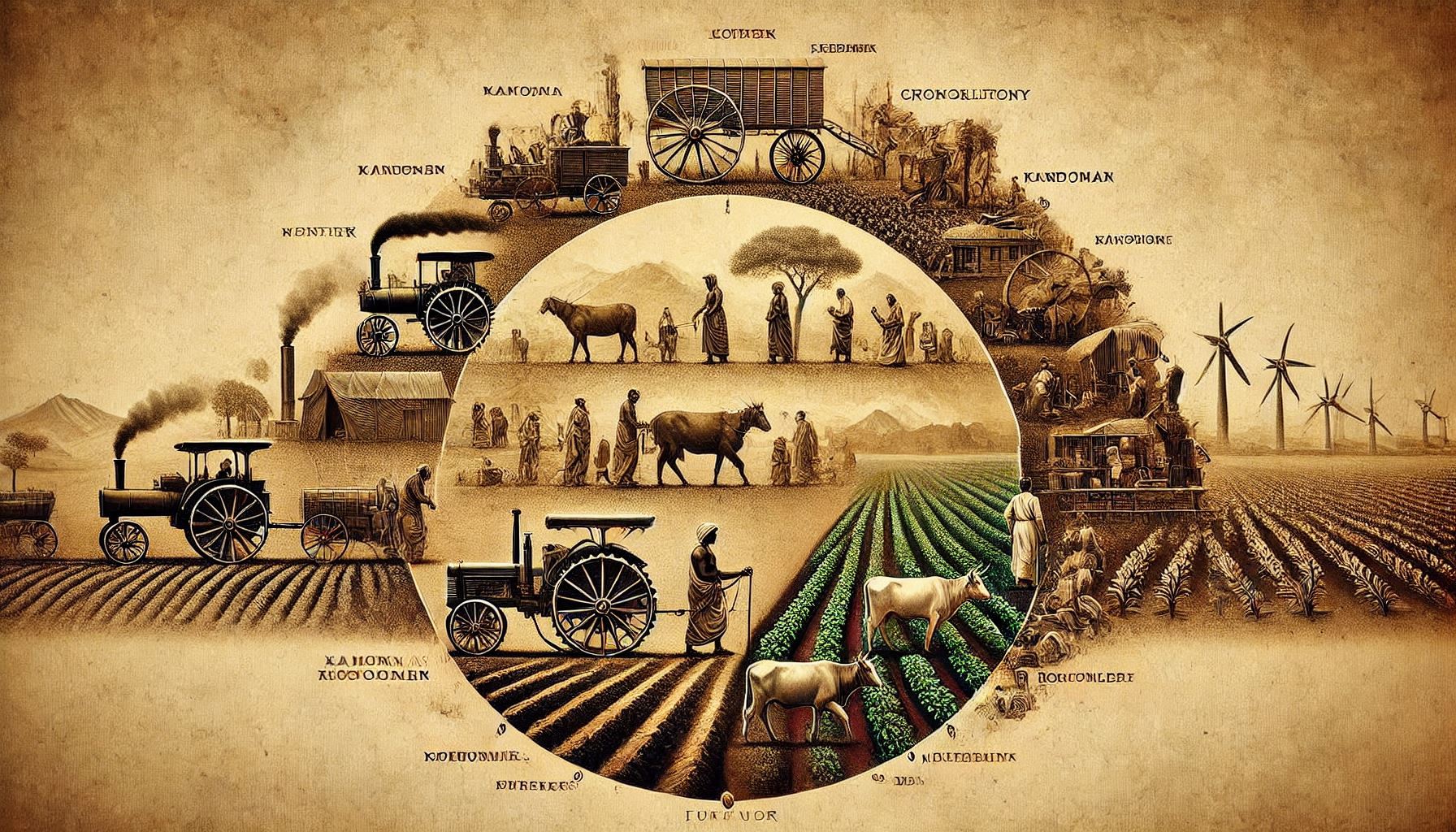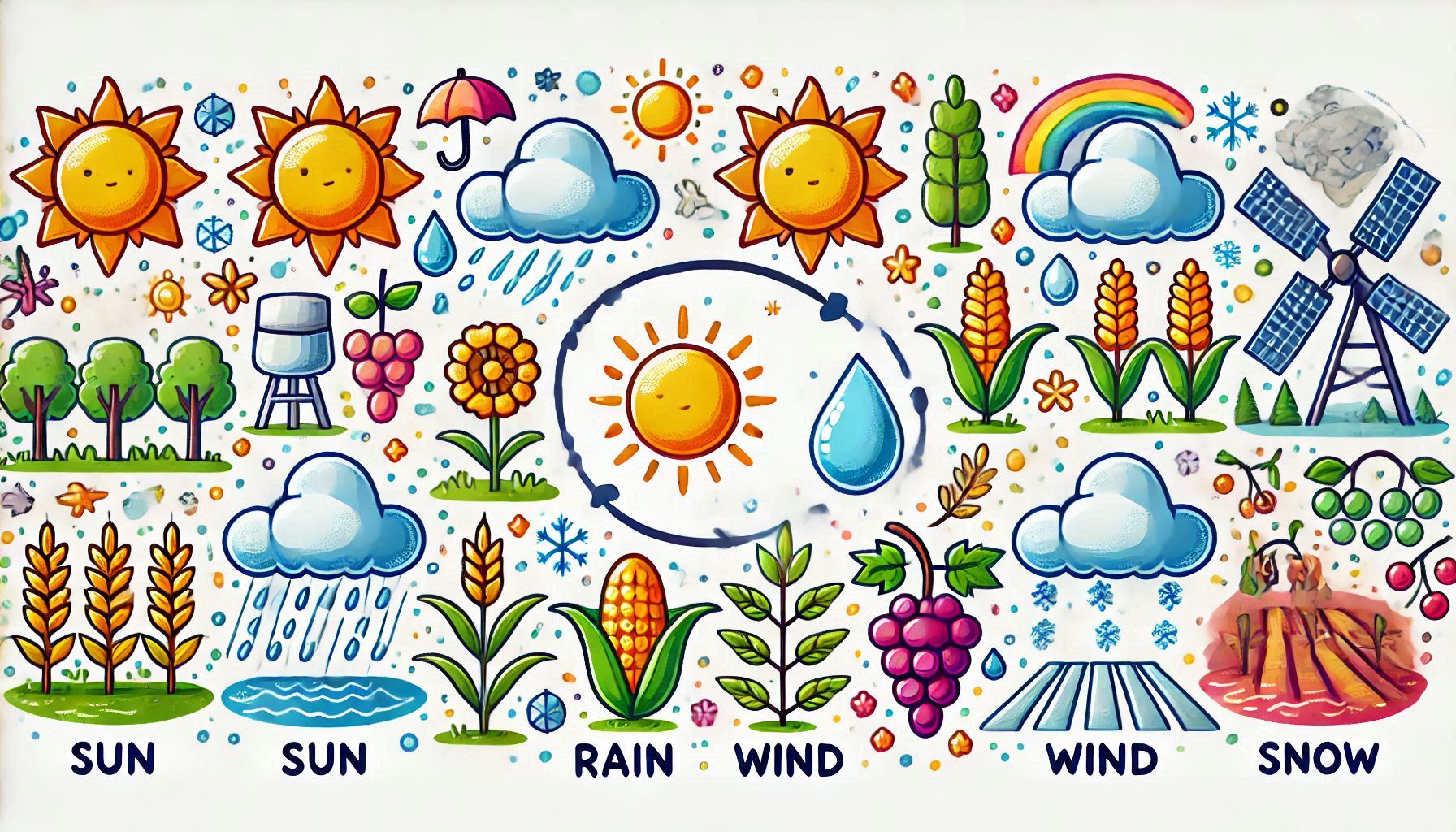Organic/eco-friendly agriculture – Dry farming – Concepts and principles One Liner
Organic / Eco-friendly Agriculture
- Organic farming avoids synthetic fertilizers and pesticides, relying on natural substances.
- The global demand for organic food is increasing due to health and safety concerns.
- Organic farming aims to maintain soil fertility and biological diversity.
- Organic products are often more lucrative because they fetch higher market prices.
- In organic farming, crop residues, animal manure, and compost are primary soil nutrients.
- Organic farming uses crop rotations to maintain soil health.
- One principle of organic farming is to minimize pollution.
- Organic farming promotes the use of renewable resources, such as solar energy.
- Organic farming supports the welfare of livestock, considering their natural behaviors.
- Organic farming requires knowledge and skills to manage pests without synthetic chemicals.
- It enhances water quality by avoiding chemical runoff into water sources.
- Crop rotations in organic farming help in controlling pests and diseases naturally.
- Organic farming practices improve soil’s water retention and structure.
- Certified organic farms avoid genetically modified organisms (GMOs).
- Organic farming tends to use fewer pesticides, thus reducing the health risk to farmers and consumers.
- Organic food is free from chemical residues, enhancing food safety.
- Increased biodiversity is a goal in organic farming, contributing to ecosystem stability.
- Organic farming encourages the use of local resources and traditional agricultural knowledge.
- The yield in organic farming is generally lower but the environmental impact is less harmful.
- Organic farming systems are more labor-intensive than conventional farming.
- Organic farming can be economically viable, especially with premium pricing for products.
- Eco-friendly agriculture minimizes environmental degradation by promoting sustainable practices.
- Organic farming reduces the risk of soil erosion due to better land management.
- It helps in reducing the carbon footprint by using less energy-intensive production methods.
- Organic farming supports food sovereignty and rural livelihoods.
- Organic farming can boost soil biodiversity by supporting various microorganisms.
- Organic farming maintains ecosystem services like pollination and pest control.
- It reduces water consumption compared to conventional agriculture by promoting efficient water use.
- Organic farming fosters long-term productivity by enhancing soil health.
- It involves a holistic approach, considering ecological, economic, and social factors.
- Organic farming supports community-based agriculture and local food systems.
- In organic systems, biodiversity contributes to pest management and pollination.
- Organic farming has lower environmental risks as it avoids chemical inputs.
- It offers a natural solution to soil health and fertility issues through sustainable practices.
- Organic farming systems require extensive crop and soil management.
- Organic farming uses companion planting to enhance plant health and prevent pest outbreaks.
- Eco-farming works in sync with nature by promoting natural pest control and soil health.
- It supports ecological farming by maintaining a balance between crops, animals, and the environment.
- Biological farming aims to protect and enhance biodiversity in agricultural systems.
- Biodynamic farming emphasizes spiritual and holistic practices to enhance farm productivity.
Dry Farming
- Dryland agriculture is practiced in regions receiving less than 750mm of rainfall annually.
- In dryland areas, crop productivity heavily depends on rainfall distribution.
- Dry farming uses water-efficient crops and practices to minimize water usage.
- Drought-resistant crops are essential in dryland agriculture.
- Dry farming often includes soil moisture conservation techniques like mulching.
- Dryland areas cover about 70% of India’s cultivated land.
- Crops like sorghum and pearl millet thrive in dryland areas.
- Dry farming techniques include deep plowing to increase water retention.
- Rainfed agriculture is a type of dryland agriculture dependent on annual rainfall.
- Crop failure risk is higher in dryland agriculture due to inconsistent rainfall.
- Dryland agriculture can benefit from crop substitution with more water-efficient varieties.
- Irrigation is often not feasible in dry farming regions, requiring adaptive strategies.
- Dryland farming contributes about 42% of India’s total food grain production.
- A key strategy in dryland agriculture is proper crop planning based on rainfall patterns.
- Soil erosion is a major issue in dryland farming, often mitigated by contour farming.
- Farmers in dry regions need to carefully manage water and moisture retention.
- Crop rotation and intercropping improve the resilience of dryland systems.
- Dryland agriculture focuses on increasing yields with minimal water input.
- Effective rainwater management can improve productivity in dryland farming.
- Watershed management techniques are used to optimize water use in drylands.
- Dryland farming uses organic fertilizers to improve soil moisture retention.
- Dry farming areas often rely on native plants and varieties that are drought-tolerant.
- Improved dryland technology includes rainwater harvesting to cope with water scarcity.
- Agroforestry practices are common in dryland systems to reduce soil degradation.
- Dryland areas are more susceptible to climatic hazards like drought and floods.
- Mulching is an effective dryland farming technique to conserve soil moisture.
- Alternate land use systems help diversify income and reduce risk in dryland areas.
- Dryland areas may incorporate pasture management and tree farming for sustainability.
- Crop yields in dryland farming are closely linked to seasonal rainfall and its distribution.
- Livestock farming in drylands helps optimize land use and diversify farm income.
- Dryland agriculture relies heavily on traditional knowledge for crop and water management.
- Proper crop selection is crucial in dryland farming to adapt to erratic rainfall patterns.
- The adoption of drought-tolerant crop varieties helps improve dryland productivity.
- Soil and water conservation techniques, like terraces, are used to prevent erosion in drylands.
- Crop substitution involves replacing traditional crops with more efficient, drought-tolerant options.
- In dryland areas, mixed cropping can help increase productivity and reduce risk.
- Dryland farming faces challenges from poor soil fertility and lack of irrigation infrastructure.
- Soil moisture management in dryland farming ensures better crop survival and growth.
- Precision agriculture techniques are being adopted to maximize efficiency in dryland systems.
- Dryland farming requires careful management of both water and soil resources.
- Integrated pest management is essential in dryland farming to protect crops without relying on chemicals.
- Use of organic matter like compost and manure improves soil health in dryland areas.
- Dryland agriculture is increasingly reliant on sustainable and low-cost technologies.
- Crop planning and timely sowing are critical to succeed in dry farming conditions.
- Dryland farming requires high levels of resilience and adaptive management practices.
- Overgrazing in dryland areas can lead to land degradation, affecting productivity.
- Dryland agriculture emphasizes maximizing yield per drop of water.
- The introduction of agro-ecological practices can help improve soil and water conservation.
- In dryland systems, farmers often rely on indigenous techniques for rainwater harvesting.
- Dryland farmers often use conservation tillage to reduce evaporation and conserve moisture.
- Livestock are integrated into dryland farming systems to enhance nutrient cycling and provide income.
- Dryland farmers often face challenges in accessing financial support and technology.
- Crop diversification in dryland farming systems can reduce dependency on a single crop.
- Adoption of modern agricultural practices in drylands can help combat climate change effects.
- Dryland agriculture systems are essential for food security in arid regions.
- Precision irrigation systems are being explored to improve water efficiency in dryland farming.
- Dryland farming may also involve agroecological systems like alley cropping and agroforestry.
- Improved access to market and technology can help farmers in dryland areas improve productivity.
- Effective dryland management can lead to increased resilience against climate variability.
- Drought preparedness and resilience planning are essential for the long-term sustainability of dryland agriculture.










